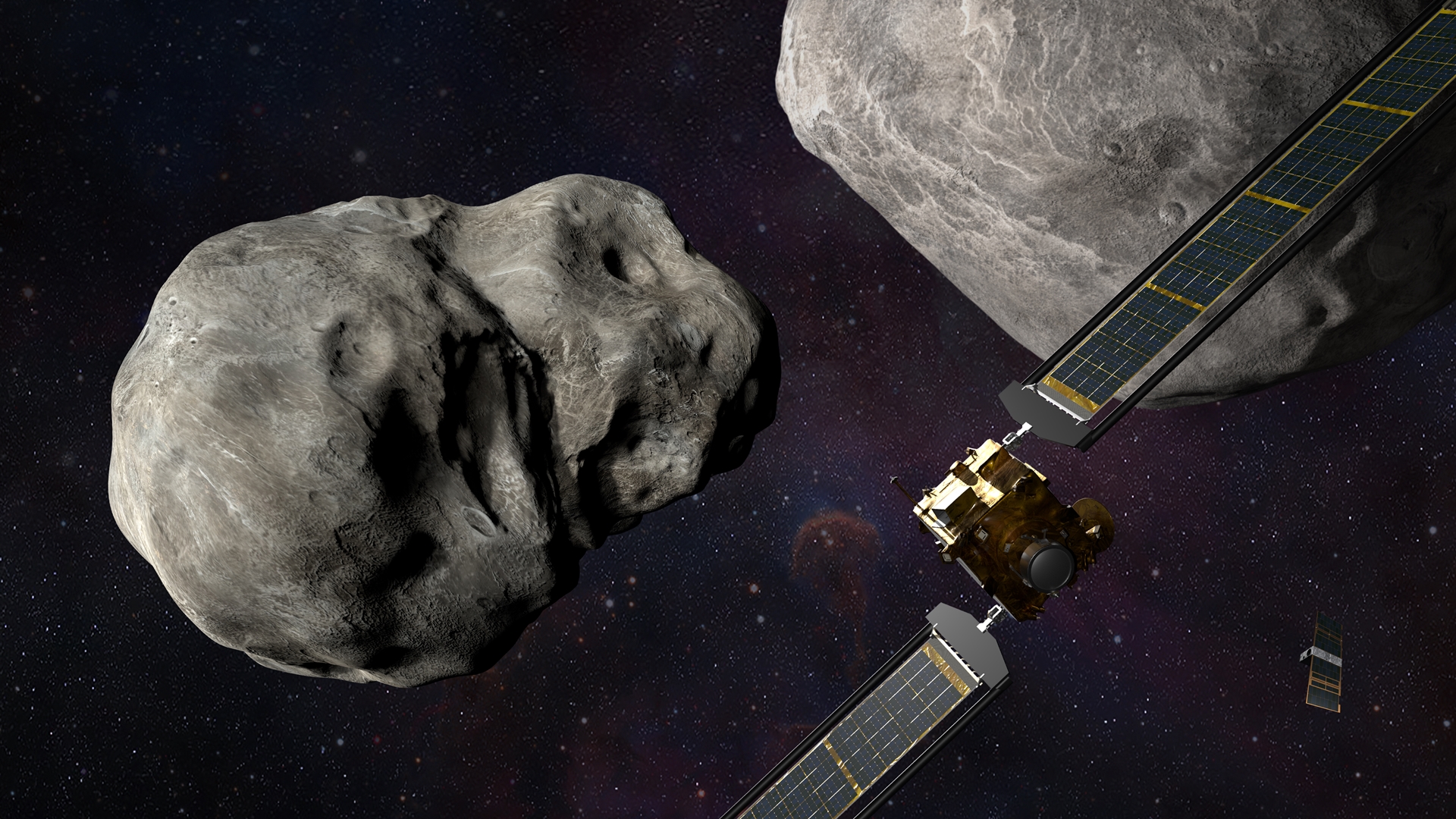This morning the Double Asteroid Redirection Test (DART) mission successfully launched aboard a SpaceX Falcon9 rocket from the Vandenberg Space Force Base in California.
The DART mission is being conducted to see whether a kinetic impact would be able to change the trajectory of an asteroid that could one day be destined for Earth.
The spacecraft doing this is about as big as a small car and will strike the Didymos asteroid as well as the smaller Dimorphos attached to it at a speed of approximately 6kmph.
Deployment confirmed, @NASA’s DART is on its way to redirect an asteroid pic.twitter.com/UTxkcJFcq0
— SpaceX (@SpaceX) November 24, 2021
The DART’s payload contains one instrument, the Didymos Reconnaissance and Asteroid Camera for Optical Navigation or DRACO.
“DRACO is a high-resolution imager derived from the New Horizons LORRI camera to support navigation and targeting, to measure the size and shape of the asteroid target, and to determine the impact site and geologic context. DRACO is a narrow-angle telescope with a 208-millimeter aperture and field of view of 0.29 degrees. It has a complementary metal-oxide semiconductor (CMOS) detector and sophisticated onboard image processor to determine the relative location of Dimorphos and support SMART Nav,” reads an explainer about the craft.
The asteroid in question was selected because it poses no actual threat to Earth and the impact will allow scientists will be able to observe the change in orbit with ground-based telescopes.
There is also a CubeSat aboard called the LICIA Cube contributed by Agenzia Spaziale Italiana. This CubeSat will be ejected from DART ten days prior to impact and will be used to capture images of the impact, the ejecta cloud and hopefully the impact crater.
DART is only expected to arrive at Didymos in the latter half of 2022.

